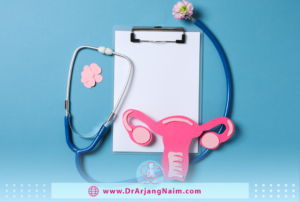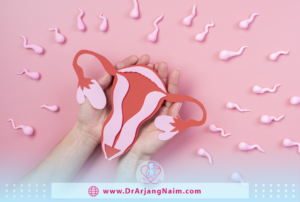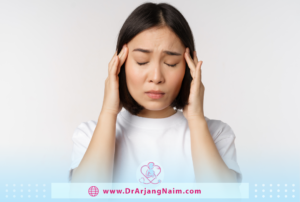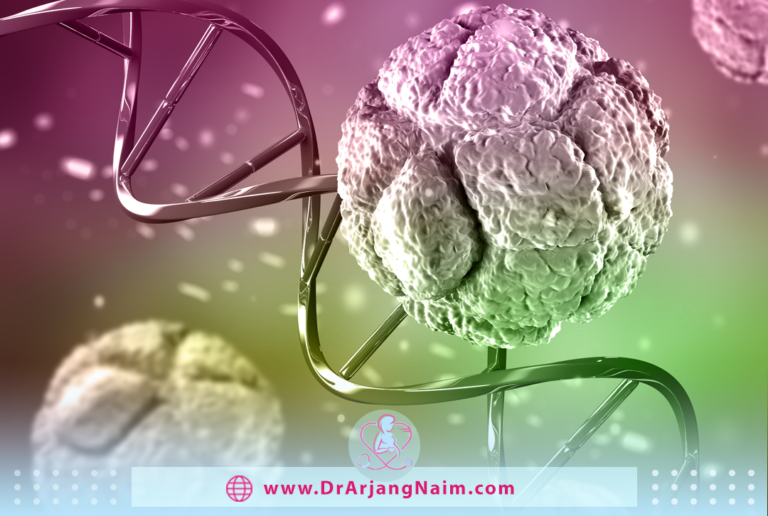In the endocrine system, the pituitary gland uses gonadotropin-releasing hormone to stimulate the production of follicle-stimulating hormone and luteinizing hormone. These gonadotropins make the sex hormones testosterone, estrogen, and progesterone. GnRH is critical for sexual maturation, libido, and fertility.
What is gonadotropin-releasing hormone (GnRH)?
All people produce gonadotropin-releasing hormone (GnRH). The number of hormones increases in adolescence and at the beginning of puberty. Increasing this hormone’s level stimulates follicle-stimulating hormone (FSH) and luteinizing hormone (LH).
FSH and LH are gonadotropins. Gonadotropins are essential for reproductive health. They help the maturation and function of the gonads. The gonads are ovaries in people who were born female and testicles in people who were born male.
Types of gonadotropins
There are three main types of gonadotropins.
Follicle-stimulating hormone (FSH)
The pituitary gland produces this hormone and plays a critical role in both men and women. In females, FSH stimulates the growth and development of follicles in the ovaries, which contain immature eggs. In males, FSH helps with sperm production by supporting the Sertoli cells in the testes.
Luteinizing hormone (LH)
Also produced by the pituitary gland, LH works together with FSH. In females, the LH surge triggers ovulation, releasing a mature egg from the ovary. In males, LH stimulates the Leydig cells in the testes to produce testosterone, the primary male sex hormone.
Human chorionic gonadotropin (hCG)
This hormone is unique because the pituitary gland does not produce it. Instead, hCG is produced by the placenta during pregnancy. hCG plays a vital role in early pregnancy by stimulating the corpus luteum (the remaining follicle after ovulation) to continue producing progesterone, a hormone essential for a healthy pregnancy.
It’s important to note that all three gonadotropins are glycoprotein hormones, meaning they are proteins with attached sugar molecules. These sugar molecules influence the hormone’s stability and function in the body.

What is the function of GnRH in females?
Gonadotropin-releasing hormone (GnRH) is a crucial hormone in the female reproductive system, acting as the orchestra’s conductor. It is produced by the hypothalamus, a region located deep within the brain. GnRH’s main function is to stimulate the pituitary gland, another part of the brain, to release two other hormones: follicle-stimulating hormone (FSH) and luteinizing hormone (LH).
FSH and LH then travel through the bloodstream to the ovaries, which play essential roles in egg maturation and ovulation. Here’s a more detailed breakdown of GnRH’s role in females:
- Stimulates FSH production: FSH acts on the ovaries to stimulate the growth and development of follicles, which are fluid-filled sacs that contain immature eggs.
- Triggers ovulation: As estrogen levels rise due to follicle growth, GnRH pulses increase frequency in the mid-cycle. This surge in GnRH stimulates the pituitary gland to release a large amount of LH. The LH surge triggers the release of a mature egg from the dominant follicle (ovulation).
- Regulation throughout the menstrual cycle: The pulsatile release of GnRH throughout the menstrual cycle is essential for the proper regulation of FSH and LH and their downstream effects on the ovaries.
Overall, GnRH plays a master regulatory role in the female reproductive system, influencing puberty onset, menstrual cycle regulation, and ovulation.
What is the function of GnRH in males?
Produced by the hypothalamus, it directs the show by stimulating the pituitary gland to release two key hormones: luteinizing hormone (LH) and follicle-stimulating hormone (FSH). These two hormones then take center stage in the testes, where they influence testosterone production and sperm development. Here’s a breakdown of GnRH’s specific roles in males:
- LH stimulation and testosterone production: GnRH prompts the pituitary gland to release LH, which acts on the Leydig cells in the testes. These Leydig cells produce testosterone, the primary male sex hormone. Testosterone plays a vital role in various male functions, including sperm production, muscle and bone development, and sex drive.
- FSH stimulation and sperm production: GnRH also influences the release of FSH. FSH acts on the Sertoli cells within the testes, supporting sperm development and maturation.
The pulsating secretion of GnRH throughout the day is essential for properly regulating LH, FSH, and testosterone levels in males. This hormonal interplay is critical for maintaining male sexual health and fertility.
What happens if GnRH levels are too high?
GnRH overproduction is rare. High levels may increase the risk of developing a pituitary adenoma. These non-cancerous tumors can cause the body to overproduce follicle-stimulating hormone and luteinizing hormone. As a result, the body may produce too much estrogen or testosterone. In children, high levels of GnRH may cause precocious puberty.

What happens if GnRH levels are too low?
Conditions associated with low GnRH levels in women include:
- Abnormal menstruation or amenorrhea
- Absence of ovulation
- Delayed puberty and puberty
- Female infertility
- Low libido
Conditions associated with low GnRH levels in men include:
- Delayed puberty
- Low libido (hypogonadism)
- Male infertility, low sperm count, or azoospermia
- Testicular disorders such as Kallmann syndrome
Gonadotropin therapy
Gonadotropin therapy uses injectable medications containing laboratory-made forms of follicle-stimulating hormone (FSH) and/or luteinizing hormone (LH). Naturally produced by the pituitary gland, these hormones play essential roles in reproduction.

Functions of gonadotropin therapy
Gonadotropin therapy is primarily used to stimulate ovulation (egg release) in women with certain fertility issues. Here’s a breakdown of its applications:
- Ovulation induction: In women with ovulation disorders like Polycystic ovary syndrome (PCOS), gonadotropin therapy can stimulate the ovaries to produce mature eggs and promote ovulation.
- Controlled ovarian stimulation (COS) for assisted reproductive technologies (ART): In procedures like in vitro fertilization (IVF), gonadotropin therapy stimulates the ovaries to develop multiple mature eggs, increasing the chances of successful fertilization.
Types of gonadotropins used in therapy
There are two main types of gonadotropins used in treatment:
- Follicle-stimulating hormone (FSH): This lab-made FSH is similar to the naturally occurring FSH and stimulates the growth and development of follicles in the ovaries.
- Follicle-stimulating hormone (FSH) for Therapy: Luteinizing hormone (LH): This lab-made LH mimics the natural LH surge that triggers ovulation. It’s used in some protocols after FSH treatment to promote final egg maturation and ovulation.
Administration of gonadotropin therapy
Gonadotropin therapy medications are typically administered through self-administered injections under the skin (subcutaneous) or sometimes intramuscularly. A healthcare professional will provide specific instructions on dosage, injection technique, and monitoring schedule.

Side effects of gonadotropin therapy
Gonadotropin therapy can cause some side effects, including:
- Injection site reactions like pain, redness, or swelling
- Headache
- Mood swings
- Breast tenderness
- Bloating
- Ovarian Hyperstimulation Syndrome
Ovarian Hyperstimulation Syndrome is a severe but rare complication of ovarian stimulation.
Gonadotropin therapy is a complex treatment that should only be administered under the supervision of a qualified healthcare professional specializing in reproductive medicine.
The bottom line
Gonadotropin-releasing hormone (GnRH) production in the body affects sex hormone levels, libido, and fertility. In children, too much GnRH can cause precocious puberty, while too little hormone can delay puberty. You need GnRH to make follicle-stimulating hormone and luteinizing hormone. These hormones (gonadotropins) stimulate the production of testosterone, estrogen, and progesterone. Healthcare providers also use GnRH medications to treat certain cancers and other conditions.
Additional questions
- What is the function of Sertoli cells?
Sertoli cells regulate cholesterol metabolism during spermatogenesis. They help sperm movement by secreting fluids.
- What are Leydig cells and their function?
The main source of androgen or testosterone in men is the Leydig cell. This physiology enables them to significantly influence various vital physiological functions in males, including spermatogenesis, regulation of sexual development, and maintenance of secondary sexual traits and behaviors.
- What is the main cause of azoospermia?
Perhaps the most obvious cause is a vasectomy, which prevents sperm from joining other fluids in ejaculation. However, in most cases, azoospermia is likely caused by factors we do not fully understand, such as genetic conditions, poor testicular development, or environmental toxins.
- What is Kallmann syndrome?
Kallmann syndrome is a genetic disorder that disrupts both puberty and smell. It delays or prevents puberty due to hormonal issues and causes a reduced or absent sense of smell. This happens because the same nerve cells control both functions. In addition to these main symptoms, there can be other health problems like kidney issues or cleft lip. Treatment focuses on hormone replacement therapy to induce puberty and potentially improve fertility.
- How does GnRH affect FSH?
GnRH pulses stimulate the synthesis and secretion of LH and FSH from the anterior pituitary. Although produced in the same gonadotrope cell, LH and FSH concentrations vary during the menstrual cycle.
References
https://my.clevelandclinic.org/health/body/22525-gonadotropin-releasing-hormone
https://www.institutobernabeu.com/en/foro/gonadotrophins-what-are-they-what-are-their-functions/
https://www.verywellfamily.com/what-are-gonadotropins-1960179
https://centrofertilidad.com/en/blog/gonadotropin-what-is-this-hormone-and-what-does-it-really-do/




